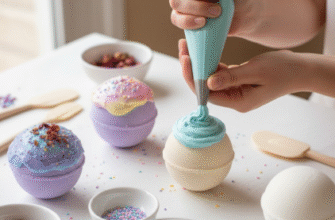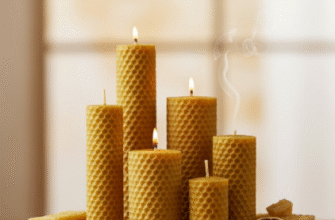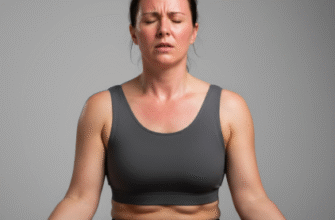Running late? Hair looking a bit less than fresh but no time for a full wash and dry? Many people reach for commercial dry shampoos in these moments. They work wonders for absorbing excess oil and adding a bit of volume, extending the time between washes. However, store-bought options can be pricey, come in aerosol cans that aren’t the most environmentally friendly, and sometimes contain ingredients like talc, alcohol, or artificial fragrances that some individuals prefer to avoid. The good news? You likely have everything you need to whip up an effective, natural dry shampoo alternative right in your kitchen pantry.
Creating your own dry shampoo is surprisingly simple and incredibly cost-effective. The basic principle behind any dry shampoo, commercial or homemade, is oil absorption. You need a fine powder that can soak up the sebum your scalp naturally produces, making your hair look cleaner and feel lighter. By using common household staples, you gain complete control over the ingredients, tailoring them perfectly to your hair type, color, and sensitivities.
The Power Players: Simple Ingredients for Oil Absorption
The foundation of most DIY dry shampoos is a starchy powder. These ingredients excel at soaking up grease without leaving heavy residue if used correctly. Here are some top contenders readily available in most homes:
- Cornstarch: Cheap, cheerful, and highly effective. Its fine texture makes it easy to apply and blend, though it can look a bit white on darker hair if not used sparingly or tinted.
- Arrowroot Powder: Another fantastic starch, very similar to cornstarch in texture and absorbency. It’s often preferred by those looking for a corn-free alternative and is known for being lightweight.
- Rice Flour: Finely milled rice flour (not coarse ground) can also work. Look for the finest grind you can find for better blending. It has been used traditionally in some cultures for hair care.
- Oat Flour: You can make this yourself by blending rolled oats into a very fine powder using a high-speed blender or coffee grinder. Ensure it’s super fine to avoid grittiness. Oats can be soothing to the scalp.
- Baking Soda: While excellent at absorbing oil and neutralizing odors, baking soda should be used with caution. It’s alkaline and can potentially disrupt the scalp’s natural pH balance over time, leading to dryness or irritation for some. Use it sparingly as part of a blend, rather than on its own, and consider skipping it if you have a sensitive scalp.
Customizing for Your Hair Color
One major advantage of DIY dry shampoo is the ability to tint it, preventing that tell-tale white cast, especially on darker hair shades. Simply mix a small amount of a colored powder into your base starch until you reach a shade close to your roots.
For Light Hair (Blonde, Light Brown, Grey)
Plain cornstarch, arrowroot powder, or rice flour often works well on its own for lighter hair colors. You generally don’t need to add any tint. If your hair is golden blonde, a tiny pinch of turmeric or finely ground chamomile flowers could add a subtle warmth, but test this carefully as turmeric can stain.
For Dark Hair (Dark Brown, Black, Red)
This is where customization shines. Start with your chosen base (like arrowroot or cornstarch) and gradually mix in one of these until you achieve a suitable color match:
- Unsweetened Cocoa Powder: Perfect for brunettes. It smells lovely too! Ensure it’s unsweetened to avoid stickiness. Start with a small amount and add more as needed.
- Activated Charcoal: Excellent for black or very dark brown hair. Use very sparingly as it’s incredibly potent and can be messy. A tiny pinch goes a long way.
- Ground Cinnamon: Adds a warm, reddish-brown tint suitable for redheads or auburn hair. It also offers a pleasant scent. Some people find cinnamon mildly irritating, so a patch test is wise.
- Finely Ground Dark Clays (like Rhassoul or Bentonite): These can add color and volume but use them in moderation as clays can sometimes be drying if overused. Ensure they are cosmetic grade and finely milled.
Mixing Your DIY Dry Shampoo: Simple Recipes
There’s no single perfect recipe; feel free to experiment! Here are some starting points:
Basic Light Hair Formula:
- 1/4 cup Arrowroot Powder OR Cornstarch
- Optional: 1 tablespoon Oat Flour (for scalp soothing)
- Optional: 2-3 drops of essential oil like Lavender or Peppermint (mix in thoroughly)
Basic Dark Hair Formula (Adjust colorant amount):
- 1/4 cup Arrowroot Powder OR Cornstarch
- 1-2 tablespoons Unsweetened Cocoa Powder (for brown hair) OR 1/2 teaspoon Activated Charcoal (for black hair) OR 1 tablespoon Cinnamon (for red/auburn hair)
- Optional: 1 tablespoon Rice Flour
- Optional: 2-3 drops of essential oil like Rosemary or Cedarwood (mix in thoroughly)
Mixing Instructions: Combine your chosen powders in a clean, dry jar or container. If adding essential oils, drip them in and stir very well with a fork or whisk to break up any clumps and distribute the oil evenly. Seal the container tightly.
Application is Key: How to Use Your Homemade Dry Shampoo
Applying DIY dry shampoo correctly makes all the difference between fresh-looking locks and a powdery mess.
- Use on Dry Hair Only: Never apply to wet or damp hair.
- Section Your Hair: Focus on the oiliest areas, usually around the roots, hairline, and crown. Lift sections of hair to expose the roots.
- Apply Sparingly: This is crucial! You need less than you think. Dip a clean makeup brush (a fluffy blush or powder brush works well) into your powder mixture, tap off the excess, and gently dab or brush it onto the roots. Alternatively, you can transfer some powder into a salt shaker or a container with small holes for easier sprinkling, but the brush method offers more control. Avoid dumping powder directly onto your scalp.
- Let it Sit: Allow the powder to sit for a few minutes (2-5 minutes is usually sufficient) to absorb the oils. Don’t rush this step.
- Massage and Blend: Gently massage the powder into your scalp and roots with your fingertips, just like you’re lathering shampoo. This helps distribute the powder and ensures it’s soaking up oil effectively.
- Brush it Out: Thoroughly brush your hair from root to tip using a clean brush (preferably a bristle brush). This removes excess powder and distributes the remaining product, preventing any visible residue. You might need to flip your head upside down and brush for better distribution and added volume. If you see any remaining powdery spots, massage or brush them again.
Important Considerations Before You Start: Always perform a patch test before applying any new DIY mixture to your entire scalp, especially if using baking soda, cinnamon, or essential oils, to check for sensitivity or allergic reactions. Remember that homemade dry shampoos primarily absorb oil; they don’t clean your hair like traditional washing. Over-reliance can lead to product build-up on the scalp, so regular washing is still necessary for scalp health.
Adding Scent with Essential Oils (Optional)
If you enjoy the scented aspect of commercial dry shampoos, you can add a few drops of essential oils to your homemade mixture. Choose oils known for hair benefits or simply scents you enjoy.
- Lavender: Calming scent, potentially soothing for the scalp.
- Peppermint: Tingling, refreshing sensation, may stimulate circulation (use sparingly).
- Rosemary: Often associated with hair health and growth, herbaceous scent.
- Tea Tree: Known for its cleansing properties, strong medicinal scent (use very little).
- Cedarwood: Earthy scent, sometimes used for scalp conditions.
- Sweet Orange or Lemon: Bright, uplifting citrus scents (citrus oils can be photosensitive, though risk is low in this application).
How to add: Add just 3-5 drops per 1/4 cup of powder base. Drip the oil in, then whisk the powder thoroughly to ensure even distribution and prevent clumps. Let the mixture sit for a day or so allows the scent to meld fully with the powder.
Storage Solutions
Store your DIY dry shampoo in an airtight container in a cool, dry place (like your bathroom cabinet or vanity drawer). Glass jars with shaker tops, old spice jars (thoroughly cleaned), or even small cosmetic jars work well. Keeping it sealed prevents moisture from getting in, which could cause clumping.
Potential Downsides and Things to Watch For
While natural alternatives are fantastic, be aware of a few things. As mentioned, baking soda can be harsh for some scalps if used too frequently or in high concentrations. Powders, if not brushed out thoroughly, can sometimes leave a slightly different texture in the hair. The biggest issue is potential build-up. Since these powders absorb oil but don’t remove dirt and dead skin cells like shampoo and water, relying solely on dry shampoo (DIY or commercial) for too long isn’t ideal for scalp health. Think of it as a temporary fix, not a replacement for washing.
Finding Your Perfect Blend
The beauty of making your own natural dry shampoo lies in the experimentation. Start with a basic recipe, see how your hair and scalp react, and adjust accordingly. Maybe you need slightly more cocoa powder for your hair color, or perhaps arrowroot powder feels lighter than cornstarch for you. You might prefer it unscented or find a particular essential oil blend invigorating. It takes minimal effort to mix up a small batch, and the ingredients are affordable and multi-purpose. So next time your hair needs a quick refresh, skip the store-bought can and head to your pantry – your personalized, natural solution is waiting to be created.








